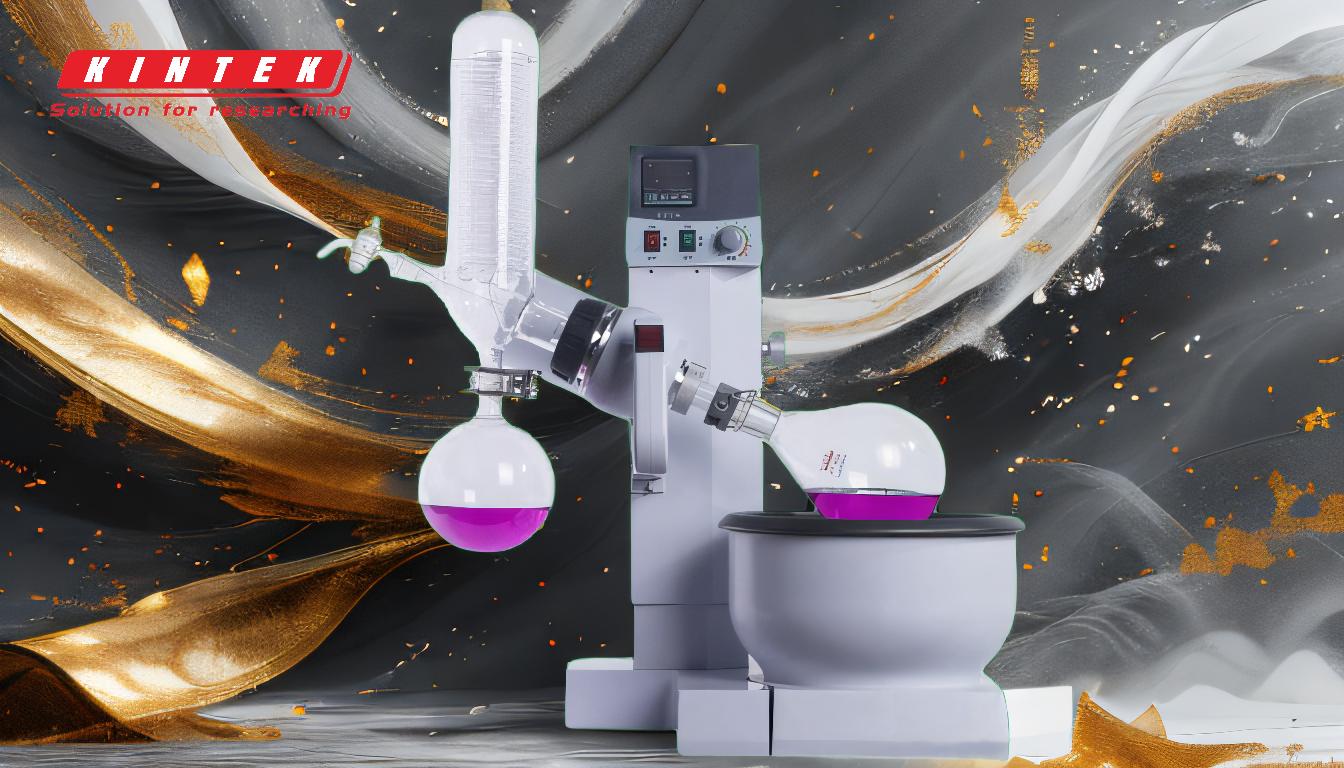Rotary evaporators, commonly used in laboratories for solvent removal, pose several risks that require careful handling and adherence to safety protocols. These risks include physical injuries from rotating parts, chemical hazards from unstable compounds, and mechanical failures like implosions or explosions. Proper use of personal protective equipment (PPE), careful handling of glassware, and adherence to operational guidelines are essential to mitigate these risks. Below is a detailed explanation of the key risks and precautions associated with rotary evaporators.
Key Points Explained:

-
Physical Hazards from Rotating Parts:
- Rotary evaporators have rotating components, such as the flask and motor, which can pose entanglement risks.
- Loose clothing, hair, necklaces, or other jewelry can get caught in the rotating parts, leading to burns, cuts, or chemical exposure.
- Precaution: Always secure loose clothing, tie back long hair, and avoid wearing jewelry when operating the equipment. Ensure no loose items are near the apparatus.
-
Chemical Hazards from Solvents and Reactive Materials:
- Solvent vapors, especially from volatile or toxic chemicals, can be hazardous if inhaled or if they come into contact with skin.
- Air-reactive materials under vacuum can cause violent reactions if air leaks into the system.
- Precaution: Use proper ventilation, such as fume hoods, and wear appropriate PPE (gloves, goggles, lab coats). Handle air-reactive materials with extreme caution, ensuring the system is airtight.
-
Implosion Risks from Glassware:
- Flawed or damaged glassware, such as star-cracked flasks, can implode under vacuum pressure, causing injury from flying glass shards.
- Precaution: Inspect glassware for cracks or defects before use. Replace damaged items immediately. Use a bump trap to prevent contamination and reduce the risk of implosion.
-
Explosion Risks from Unstable Compounds:
- Concentrating unstable impurities, such as peroxides in ethereal solutions or nitro-containing compounds, can lead to explosions.
- Precaution: Avoid evaporating unstable compounds to dryness. Use a bump trap and ensure proper solvent management. Regularly check for the presence of unstable impurities.
-
Thermal Hazards from Hot Components:
- The water bath and glassware can become extremely hot during operation, posing burn risks.
- Precaution: Handle hot components with insulated gloves or tongs. Adjust the water bath temperature to remain below the boiling point of the solvent being evaporated.
-
Mechanical and Operational Risks:
- Improper handling of the vacuum, rotation speed, or temperature control can lead to spills, contamination, or equipment failure.
- Precaution: Follow operational guidelines, such as controlling rotation speed, managing the vacuum carefully, and releasing the vacuum slowly after evaporation. Secure all connections with Keck clips or metal clamps.
-
Post-Process Cleanup and Maintenance:
- Failure to clean the equipment properly after use can lead to cross-contamination or chemical reactions in subsequent experiments.
- Precaution: Clean the bump trap and empty the receiving flask after each use. Inspect and maintain the equipment regularly to ensure safe operation.
-
Special Considerations for Volatile Solvents:
- Volatile solvents require additional precautions, such as using liquid nitrogen or dry-ice condensers to prevent evaporation into the environment.
- Precaution: Use appropriate condensers and ensure proper ventilation when handling volatile solvents.
By understanding and addressing these risks, users can operate rotary evaporators safely and effectively. Adherence to safety protocols, regular equipment maintenance, and proper training are essential to minimize hazards and ensure a safe laboratory environment.
Summary Table:
| Risk Type | Key Risks | Precautions |
|---|---|---|
| Physical Hazards | Entanglement risks from rotating parts | Secure loose clothing, tie back long hair, avoid jewelry, and keep loose items away. |
| Chemical Hazards | Solvent vapors, air-reactive materials | Use fume hoods, wear PPE, and ensure airtight systems for reactive materials. |
| Implosion Risks | Damaged glassware under vacuum pressure | Inspect glassware for cracks, replace damaged items, and use bump traps. |
| Explosion Risks | Unstable compounds like peroxides or nitro-containing compounds | Avoid evaporating unstable compounds to dryness and use bump traps. |
| Thermal Hazards | Hot water baths and glassware | Use insulated gloves or tongs and adjust water bath temperature. |
| Mechanical Risks | Improper vacuum, rotation speed, or temperature control | Follow operational guidelines, secure connections, and release vacuum slowly. |
| Cleanup & Maintenance | Cross-contamination or chemical reactions | Clean bump traps, empty flasks, and inspect equipment regularly. |
| Volatile Solvents | Evaporation of volatile solvents | Use liquid nitrogen or dry-ice condensers and ensure proper ventilation. |
Ensure your lab's safety with expert guidance—contact us today for more information on rotary evaporator safety!










